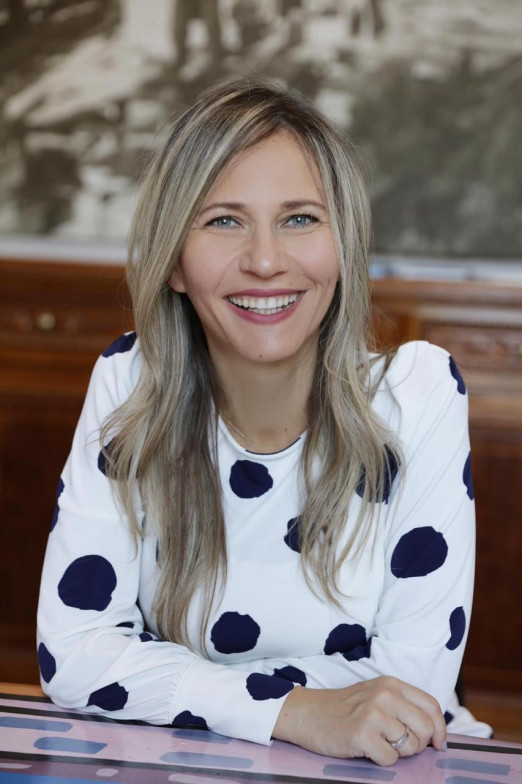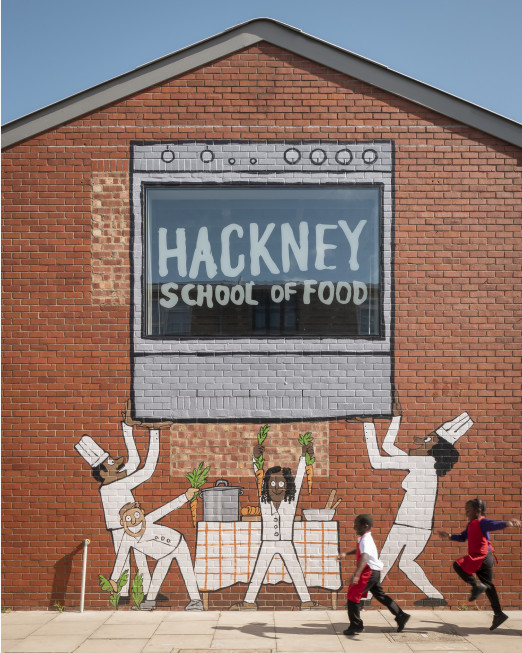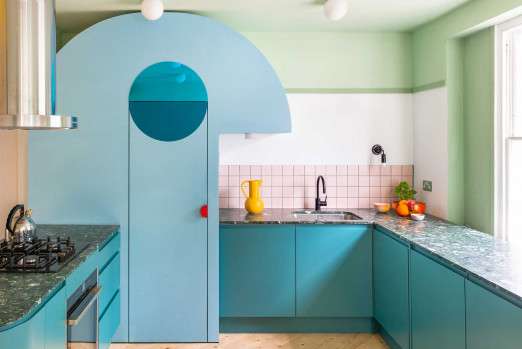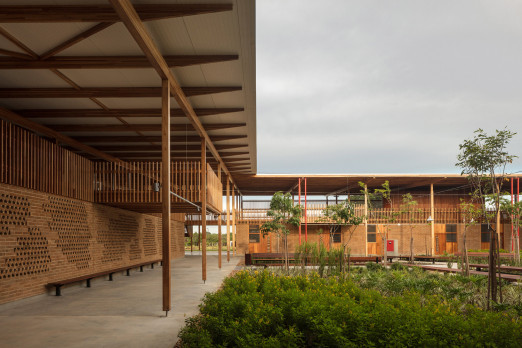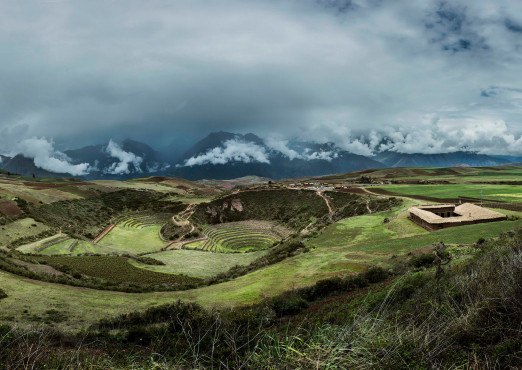Architects are used to responding to site; the lay of the land, the topography, the climate and the context. It’s more unusual to find an architect led project where the site itself takes centre stage. But in the north of Chile, that’s exactly what Santiago and Berlin based GUN architects, Jorge Godoy and Lene Nettelbeck, have done.
Mesetas Changanal lays 400km north of Santiago de Chile; a seaside development sited in Tongoy – an area of natural beauty with a natural wetland reserve, ravines and mountains, that has grown in popularity as a tourist destination. For the past nine years, GUN have been working on a new rural model to create an exemplar of biodiversity, a place where the land is nurtured back to health through carefully considered interventions.
The land in Chile has changed hands as political tides turned. This site was first farmed by Welsh immigrants who owned a huge hacienda and put the land to use breeding and selling sheep. The farmers created their own architectural hybrid; a mixture of Welsh vernacular and local materials. Under Salvador Allende, the land was ‘given’ to the farm workers and later, under Augusto Pinochet, when most land was returned to private ownership, the farm was retained by the workers. A severe and extended drought changed the condition of the land and over the years the best parts of the land near the coast were sold in parcels to build holiday homes, leaving the dry and arid plateau remaining. This increased occupation has proved problematic for land where water is scarce.
With an interest in water - GUN built an artificial ‘rainforest’ in London’s Bedford Square in 2016 - the practice proposed a nature reserve that would see the land become a testbed for sustainability and a liveable place for humans, animals and plant life. Partnering with the land owner and a Swiss German neurologist who lives in the area and is interested in the link between nature and good mental health, GUN set to work on the site.
Working with the title; ‘valley of life and fossilised land’ GUN’s starting point was to consider how to bring water, and therefore life, from the valley to the arid plateau with the land becoming a design laboratory. The practice mapped out the land, creating circular ‘nuclei’ that would become protected public spaces. Triangular plots demarcate land to be sold in the future to owners who agree to respect the intentions of the project, agreeing to rules about using local materials to build, water management and height limits. Priority is given to pedestrians with pathways designed to promote walking. Vehicles access the site through a main road acting as a spine connecting to the paths.
Each nucleus is a biotope designed to attract nature by creating a space of shade and water. The practice employed the skills of a local water diviner who used crystals to locate water sources. The nuclei act as experiments; a biotope with local plants reintroduced to ascertain what grows best. A central platform provides shade, cooling the air as well as providing a 360-degree vantage point. One indicator of success is the honey made by bees who have migrated from the valley walls to make new homes on the site.
GUN have carefully introduced architectural elements to the site that act as large-scale prototypes for future development with more interventions planned when time and budget allow. Employing the materials to hand, the architects echoed the building practices of the Welsh farmers before them; using adobe, timber, water, straw and clay to create a site specific and weather resistant building typology. Casa de Huéspedes was designed to act as a viewing tower to take advantage of the views. The small house is made from mud and wood, giving the structure the appearance of emerging from the layers of the landscape, in part a result of the terraces that rise against the grain of the narrow and linear side elevation. Chordata bridge is a landmark for understanding the landscape; to walk along the bridge is to experience and understand the rise and fall of the land.
Vertical gardens made of cement bricks arranged in a cylinder, form micro-climates as the concrete absorbs water and heat creating pockets of life supporting humidity. Plants growing up through the structure reveal how they self-organise for the best outcome, with flowers facing outwards to the sun and leaves preferring the interior shade of the columns.
Directing the flow of water up onto the Plateau informs the practice’s interventions on the site. There are currently two wells, with plans for more. Water is pumped up via small, narrow pumps, lifting water to tanks at higher points of the land. An irrigation system then directs the water to where it is needed. GUN have mapped the flow of minerals and water from the valley to the plateau in a series of exquisite drawings that reveal the love and attention given to the land.
The project will reach a tipping point when 51% of the land is sold and the community will take ownership of the project with GUN working on a consultancy basis. Interest in the project has increased during the pandemic as city dwellers seek an escape to nature. These houses will become main residences as technology allows for relocation. The practice hope they have laid the foundations of a sustainable large-scale rural urbanisation that will inspire future residents – only time will tell. Until then, the land is in safe hands.
































